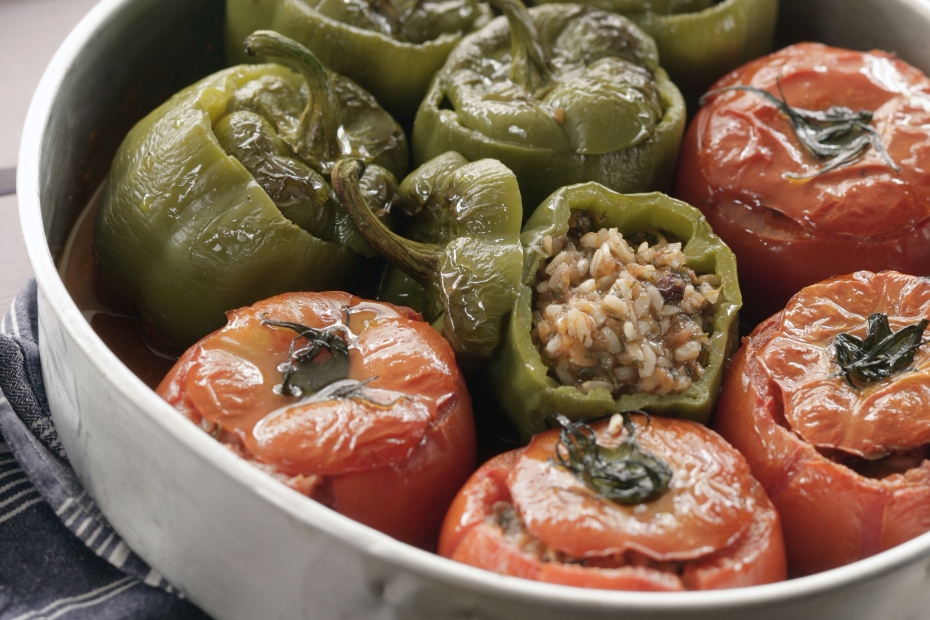Yemista is the generic term in Greek for stuffed vegetables, and there are myriad recipes in this category of foods.
Generally, stuffed vegetables are a summer preparation, and the classics include stuffed peppers, tomatoes, zucchini, and eggplants. Often these are all prepared in the same pan, with the same stuffing, and baked all together.
The stuffings:
Rice and herbs. This is the most basic stuffing. The rice used is generally a long-grain rice called nihaki in Greek, as local cooks prefer this texture to the more toothsome long-grain rices such as basmati or jasmine. Anyway, these latter varieties are newcomers to the kitchen. Onions, and plenty of them, almost always go into the stuffing, too.
Trahana. This is the milk- or butter-milk-based tiny pasta that is a traditional Greek pantry item. It is sometimes used instead of rice in certain s tuffed dishes. One of the best known is a trahana-stuffed onion dish from the waterfront town of Galaxidi in central Greece.
Bulgur. Like trahana, bulgur wheat also sometimes replaces rice in stuffed vegetable dishes. Its use is most prevalent in certain parts of Crete and in some of the Dodecanese islands.
Ground Meat. Ground meat—usually lamb or beef—appears often in stuffed dishes, almost always combined with rice.
Vegetables. In many stuffed vegetable dishes the pulp from the scooped out vegetables is used as part of the filling. Other dishes, such as imam bayialdi—one type of stuffed eggplant dish—a savory combination of onions, tomatoes and herbs, without rice or other starch, make up the mainstay of the filling.







